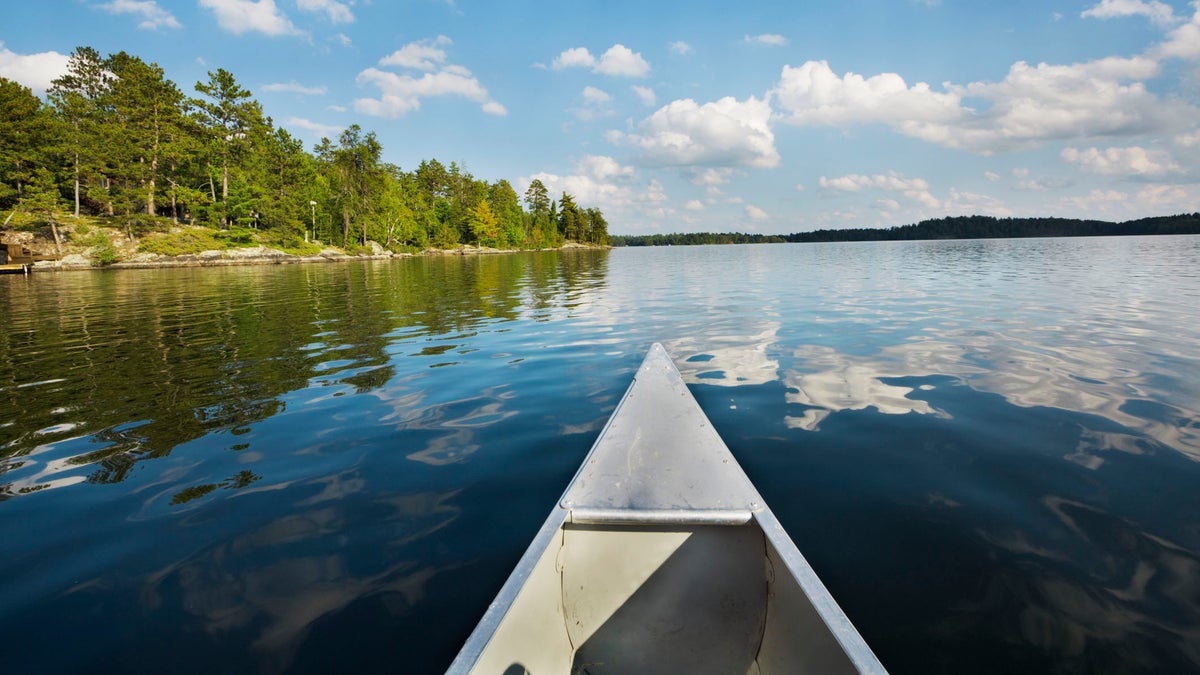No products in the cart.
Outdoor Adventure
What You Missed: Forest Services Limits Boundary Waters Entry Permits
For exclusive access to all of our fitness, gear, adventure, and travel stories, plus discounts on trips, events, and gear,
sign up for Outside+ today.
Welcome to What You Missed, our daily digest of breaking news and topical perspectives from across the outdoor world. You can also get this news delivered to your email inbox six days a week by signing up for the What You Missed newsletter.
The U.S. government is stepping in to protect one of the country’s most popular wilderness areas from its own visitors.
On December 3, the Forest Service revealed plans to cut the number of entry permits for Minnesota’s Boundary Waters Canoe Area Wilderness in 2022 after a surge in visits during the pandemic led to infrastructure and habitat damage, crowding, and congestion. The Boundary Waters, which extends for 150 miles along the U.S.-Canada border, is one of the largest areas of protected wilderness—and uncut forest—in the country, with 1,175 lakes and more than 1,200 miles of canoe routes.
The Forest Service did not say how many total permits would be available next year, nor which entry points into the wilderness would be impacted.
Officials already issue permits for the Boundary Waters and limit group size to nine individuals. In 2020 approximately 166,000 total people visited the wilderness—up 16 percent from 2019—and officials issued 30,000 total group permits, up from 25,000 the previous year. Visitation increased during the first months of 2021, but summer wildfires closed some sections of it and kept the crowds away.
This surge in popularity led to what the Forest Service called “an unacceptably high amount of resource damage.” Visitors cut trees, littered, left campfires unattended, and improperly disposed of human waste. According to rangers, there was also an uptick in reports of illegal entry, crowding, disruptive noise levels, and oversize groups.
For years Boundary Waters rangers have dealt with overcrowding and damage. In early 2021, the Forest Service implemented a requirement that visitors watch three instructional videos on Leave No Trace principles before obtaining a permit.
Overcrowding is the latest danger imperiling the Boundary Waters, which for years has also been under threat from proposed sulfide-ore copper-mining operations on the edge of the wilderness. In November the federal government initiated a plan to ban all sulfide-ore copper mining in the region for 20 years.
While the specter of mining may eventually pass, problems caused by visitors could continue. The Boundary Waters are not alone in battling overcrowding and abuse amid the pandemic. Public lands across the world saw an uptick in visits in 2020 and 2021, and land managers across the country have had to deal with issues arising from increased traffic. Some land managers have opted to establish quotas and permits, while others have intensified education campaigns to help protect fragile ecosystems and cultural sites.
Cyclist Mark Cavendish Robbed at Knifepoint
One of the world’s most accomplished professional cyclists was recently the victim of violent crime.
British sprinter Mark Cavendish revealed on his Instagram account that he and his family were robbed at knifepoint at their home in Essex, England, on November 27. Cavendish had been recovering from broken bones suffered in a crash at the Ghent Six velodrome races in Belgium when the attack occurred. Four masked men forced their way into his house and threatened him, his wife, and his two children, before ransacking the rooms and stealing two wristwatches.
“But far, far worse to be taken was the sense of security, safety, privacy and dignity that my young family and everybody else is entitled to in their own home,” Cavendish wrote. “The effect that this nightmare has had on my family is already heart-breakingly evident.”
During the 2021 Tour de France, Cavendish won three stages and tied the record for all-time stage victories at the race, with 34.
Hot Water Fireworks
The Siberian town of Oymyakon is recognized as the coldest inhabited place on the planet. On December 1, temperatures plunged to -76 degrees, triggering a coveted snow day for schoolchildren. Two kids, Vera Shpneva and Sayaana Vinokurova, used the day to record what happens when hot water meets the frigid air.
Member Exclusive
“Five Women. One Wilderness. Zero Mansplaining.” Author Maggie Shipstead spent six days exploring Alaska on a women-only expedition. Here’s what she found out. Outside
Around the Outside Network
“Family Who Died of Heat Exhaustion Spent Their Final Moments Trying to Save Daughter” A new report adds tragic detail to the case of the California family who died earlier this year on a day hike. Backpacker
“Outliers: Sage Kotsenburg” The pro snowboarder is an Olympic champion on packed powder and a soulful shredder on dirt. Beta
“Put Out the Vibe with This Mountain-Town Apparel” Editors chose these off-hill items to make you feel at home in any mountain town. Ski
“11 Performance-Focused Gifts to Improve Training and Adaptation” Give the gift of speed this year with one of these research-backed training tools. Trail Runner

